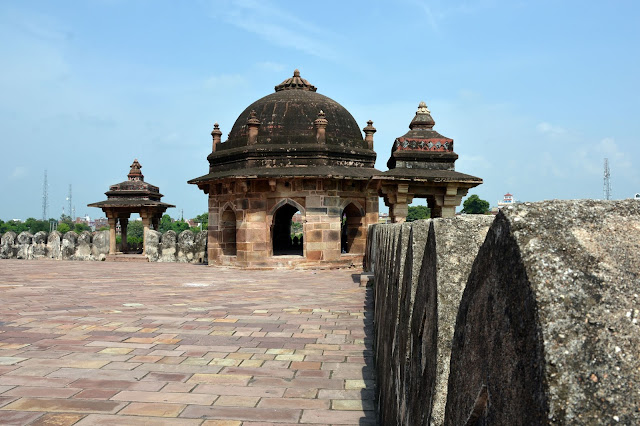The Magnificent Tomb of Sher Shah Suri, Sasaram
Sasaram (सासाराम)—a bustling city 160km south-west of state capital
Patna—is famous for production of stone chips, and for quarrying industry.
Sasaram is situated on the Grand Trunk Road (National Highway 2) and is the headquarter of Rohtas district. The town was originally known as Shah Serai, शाहसराय (resting place of King).
Sasaram is situated on the Grand Trunk Road (National Highway 2) and is the headquarter of Rohtas district. The town was originally known as Shah Serai, शाहसराय (resting place of King).
Sasaram is the birthplace of the Afghan (अफगान) king Sher Shah Suri
(शेरशाह सूरी), a warrior who defeated Mughal (मुग़ल) king Humayun (हुमायूँ) in 1540 AD and
ascended the throne of Delhi. Apart from a skillful civil
administrator, he had a shrewd political foresight. He enforced many
administrative reforms in taxation and local area management. He established
law and order across the length and breadth of his empire and fostered trade and
commerce. Many of his reforms were later followed by Mughal rulers and British
administrators.
Sher Shah’s father Hasan Shah was a Jagirdar in Sasaram.
Sher Shah was born in 1472 AD and completed his formal education at Jaunpur. He
emerged as a brave, intelligent and tactful military genius. In 1540 AD he
drove away Humayun, the Mughal emperor from Delhi and ascended the throne and
founded the Sur Afghan dynasty. Unfortunately he couldn’t rule for long. His reign
lasted for only five years. On 13th May 1545 AD (10th day of Rabi'ul Awwal,
A.H. 952) he met an accident in the Kalinjar fort. His descendants ruled Delhi
for 15 years and kept the Mughals at bay.
Sher Shah (earlier name Farid Khan) restored the old imperial road called the Grant
Trunk Road running from Dhaka to Peshawar, built a road from Agra to Jodhpur
and Chittor linking it up with the roads to Gujarat seaports. He also built a
road from Lahore to Multan. All these roads had a good number of sarais. He is
also credited with introduction of the currency called Rupiyah and organized a
systematic postal service.
The Old fort (Purana Qila) of Delhi and the mosque within it
known for its lavishness of decoration was built by him. His most outstanding
architectural contribution was the construction of his own tomb at Sasaram. The
tomb is regarded as one of the noblest specimens of Afghan architecture in
India, which combines soberness with elegance. It is an imposing brick
structure partly veneered with stone standing in the middle of a fine square
lake measuring about 305 mt and rising above a large stone terrace. Tomb’s
9.15mt high terrace is enclosed by a parapet wall with octagonal domed
pavilions at four corners. Each arm of the octagon measures about 17.0mt
externally.
Surrounding the main dome are eight pillared cupolas on the corners
of the octagon. The total height of the tomb above the terrace measures
37.57mt. The interior of the tomb is quite well ventilated through large
windows on the top portion of the walls. In a small arched recess above the
mihrab on the western wall is an inscription in two lines recording the
completion of the tomb by Salim Shah (Sher Shah’s son) on 16th August 1545 AD
(7th day of Jumada, A.H. 952), some three months after the death of Sher Shah
Suri.
Sher Shah’s tomb is hailed as one of the most magnificent
monuments of the ‘octagonal style’ in India. It is currently protected and
maintained by the Archeological Survey of India. Lying a few hundred meters
away, and also protected by the ASI, is the tomb of Hasan Shah Suri, Sher
Shah’s father.
Further reading: https://en.wikipedia.org/wiki/Tomb_of_Sher_Shah_Suri.
Further reading: https://en.wikipedia.org/wiki/Tomb_of_Sher_Shah_Suri.













Comments
I also use to write travel blogs, check it on
https://doonphotographs.blogspot.in/